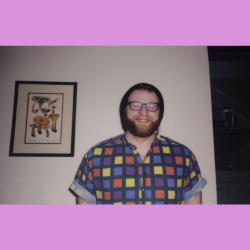I’ve asked around. Though the sample size is hardly one that would hold up under intense scrutiny, a pattern has begun to emerge. The question “Where’s the gaybourhood?”, when raised in Reykjavík, will most likely be met with the response (after several, strangely long seconds of quiet contemplation): “Well—it’s a very small city.” Whether my interlocutor is heterosexual, or part of the alphabet soup, the answer is the same.
This strikes me as odd for a number of reasons. The first being that, while yes, relative to some far more populous cities of the world—Shanghai, Istanbul, Lagos, São Paulo, New York City, etc. (thanks, Wikipedia!)—Reykjavík’s approximate 120,000 is rather small. Further, this question also deals greatly with historical population growth over time—go back to 1901, and the population was only a bit over 6,300.
But, still… A population of 120,000 seems significant to me—though to be fair, I did grow up in a small-ish town (15,000 in a good year). And I can think of plenty of cities with populations smaller than Reykjavík’s that foster vibrant gay scenes, if not full-fledged gaybourhoods.
And yeah, the development of “gaybourhoods” was historically aided (though not exclusively) by the existence of a highly trafficked urban space with large international shipping ports, naval and military bases and heavy involvement in major wars, as well as a significant history of cosmopolitanism, internal migration and immigration from abroad, and…
Well, I think I just answered my own question, didn’t I? And it’s nothing against Iceland—that’s just not how things worked here. Historically, at least.
There are a few historical spaces I was able to read up on. Known to those “in the know,” ya know? Informally, and before LGBT+ was even a conceivable acronym. Walking through Reykjavík, I feel as though I’m surrounded by hidden histories. Historical gay spots, as far as I could find, were highly secretive and unofficial, rarely documented, and limited in number and size out of necessity—this wasn’t especially news to me.
What struck me more, as I learned to accept that a lot of what I was looking for in terms of historical narrative would remain in permanent obscurity, was the following: where exactly were the present scenes? I mean, it’s one thing for a “gaybourhood” to not have existed in the past—but where’s the presence now? Why does it appear as though not much new is forming?
It wasn’t long before I started to find various explanations for the lack of gaybourhood, queer scene, or various cultural presence in contemporary Reykjavík via the wonderfully enlightening netherworld of tourist-information websites. One of the more striking quotations I found goes as follows, taken from Guide to Iceland’s website:
As for gay-culture, there isn’t much, because there does not need to be. Gays participate as regular members of society, and in Iceland there are openly gay people in all sectors and levels of society. And as such, there is no gaybourhood…
Forgetting (as much as I’d prefer not to) the use of “gay” in place of a wide variety of different identities and experiences, I wonder how much truth there is to this sentiment. Yes, Iceland is ahead of the curve in many ways in terms of LGBT+ legal rights—impressively so. But legal rights are hardly the same thing as acceptance (which, by the way, is hardly a victory—see the Riddle Scale), and certainly legal rights are not the same thing as actual safety, security, comfort, self-determined expression, etc. I don’t buy that culture is born exclusively as an act of defiance, or out of need for defence, and thus dies out when the need for protection is gone (which, mind you, it certainly is not).
So, to answer my question, the “gaybourhood” as of now exists alongside the straightbourhood (i.e. the World). Reykjavík has the outward appearance of an assimilationist’s utopia—lesbian beside queer beside trans beside intersex beside bisexual beside gay beside straight beside etc., all dancing contentedly in the same small club, no difference between them. Except that there are differences—different experiences, different wants and needs, different discrete identities and worldviews. And there is no way that everyone can or should always exist together like this.
It’s great that all spaces are open to us, and that many (though not all) can feel relatively safe living as ourselves. But no one wants only to co-mingle—with heterosexuals, or with adjacent letters. In speaking to LGBTQ+ persons of Reykjavík (while knowing there are still many more to talk to, and still much, much more to hear), one does seem to detect a want and a need for them to carve out discrete spaces for themselves. Though I wonder how much room here there actually is to do so.
Buy subscriptions, t-shirts and more from our shop right here!
















